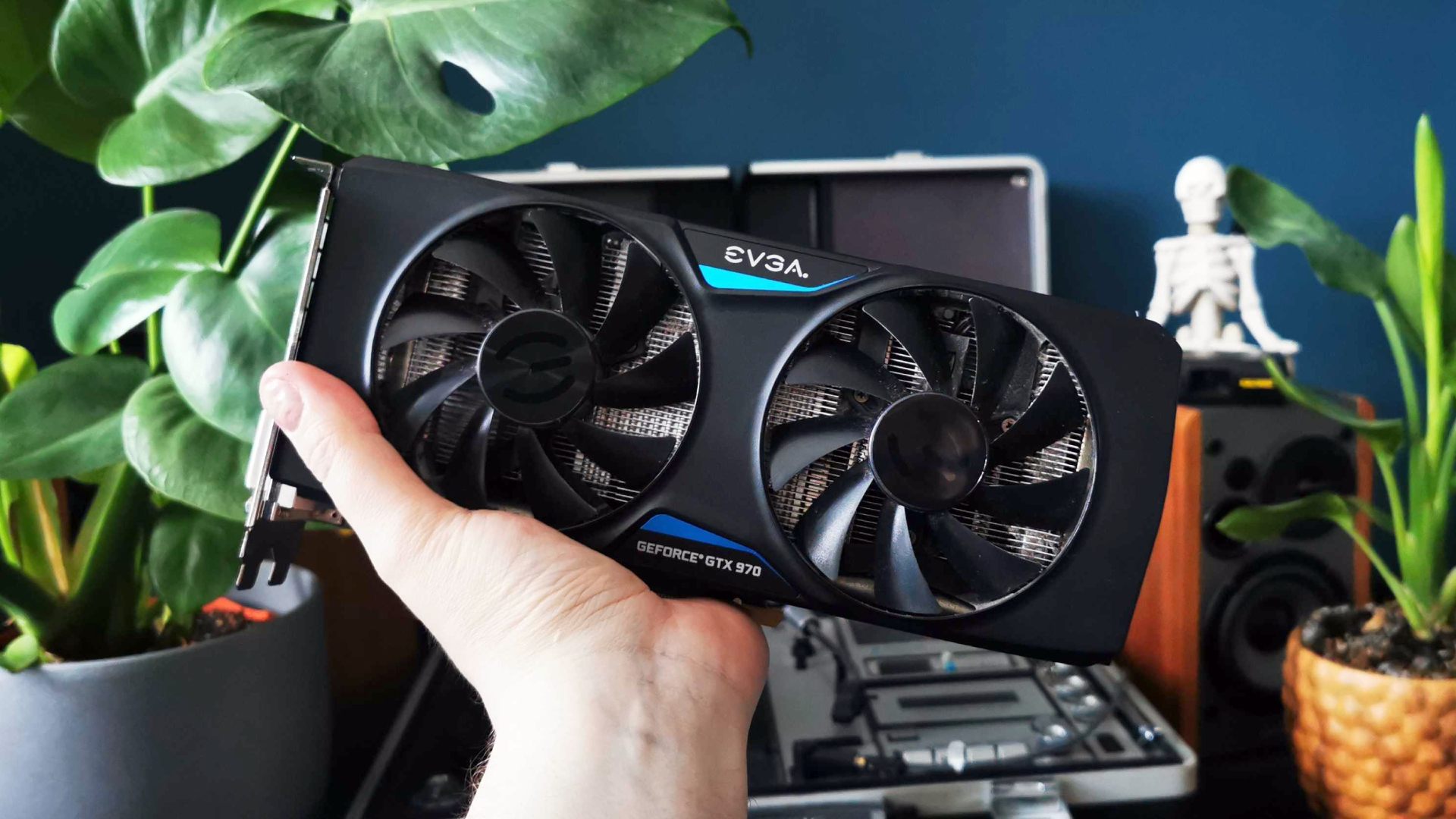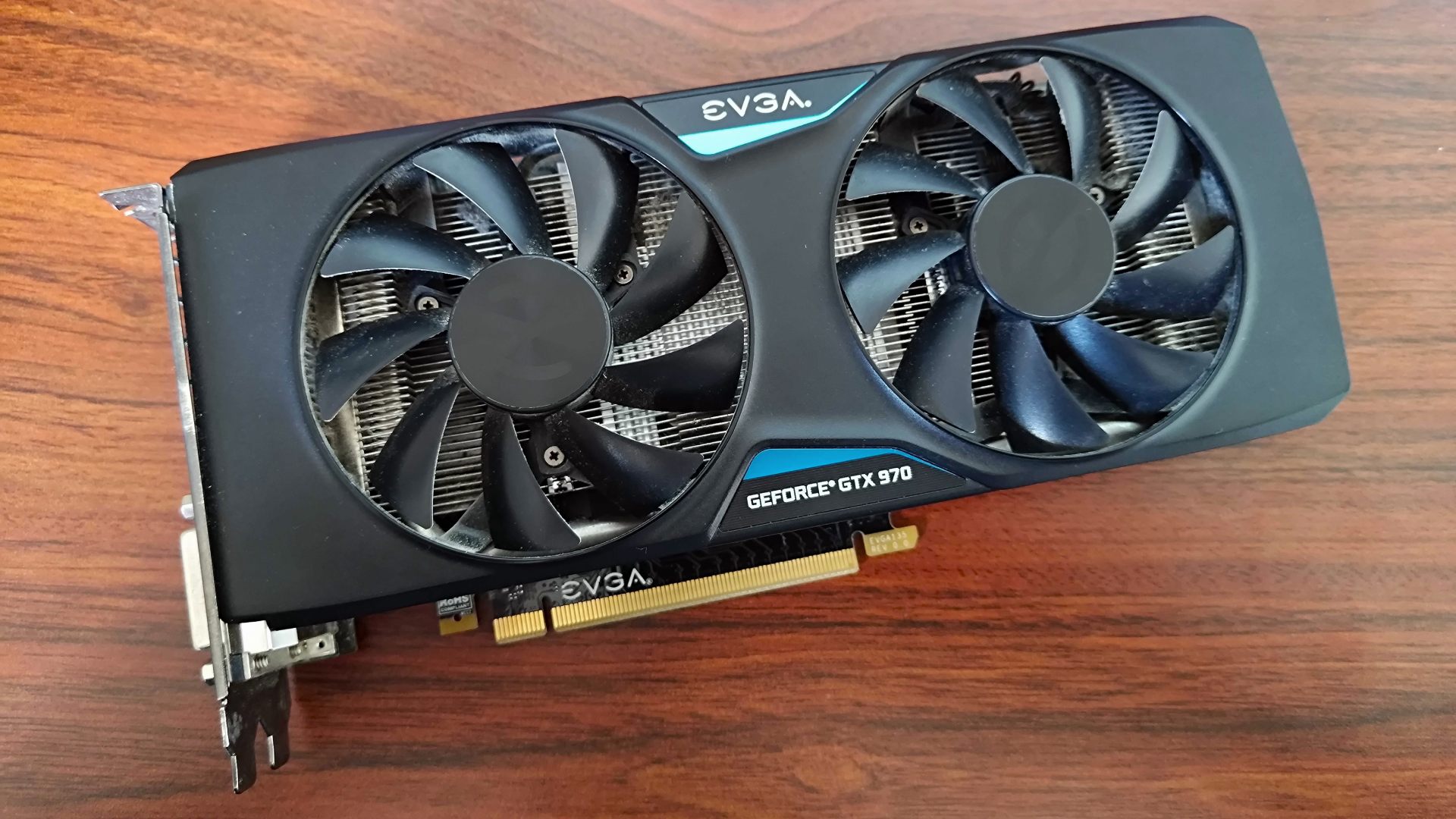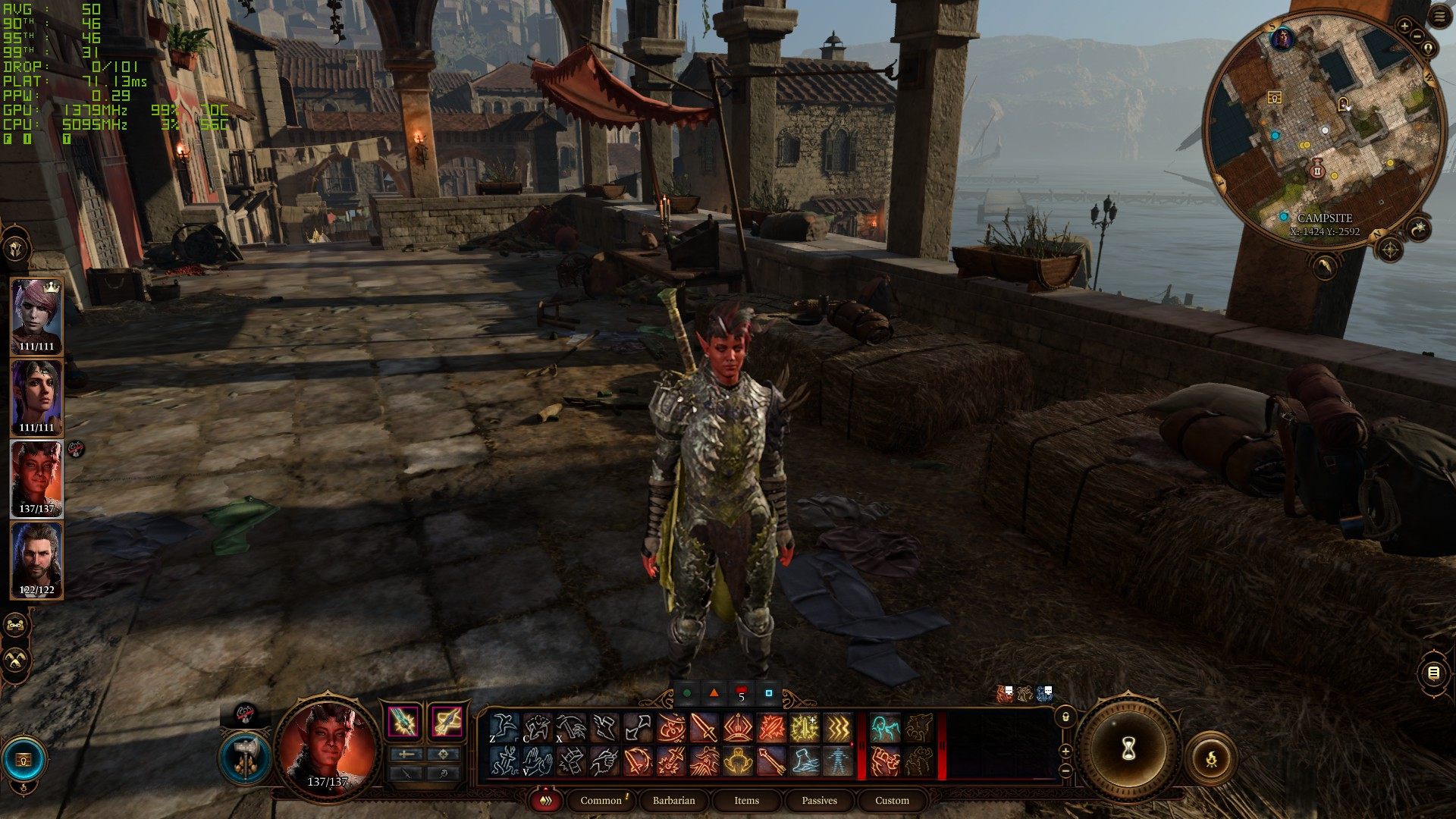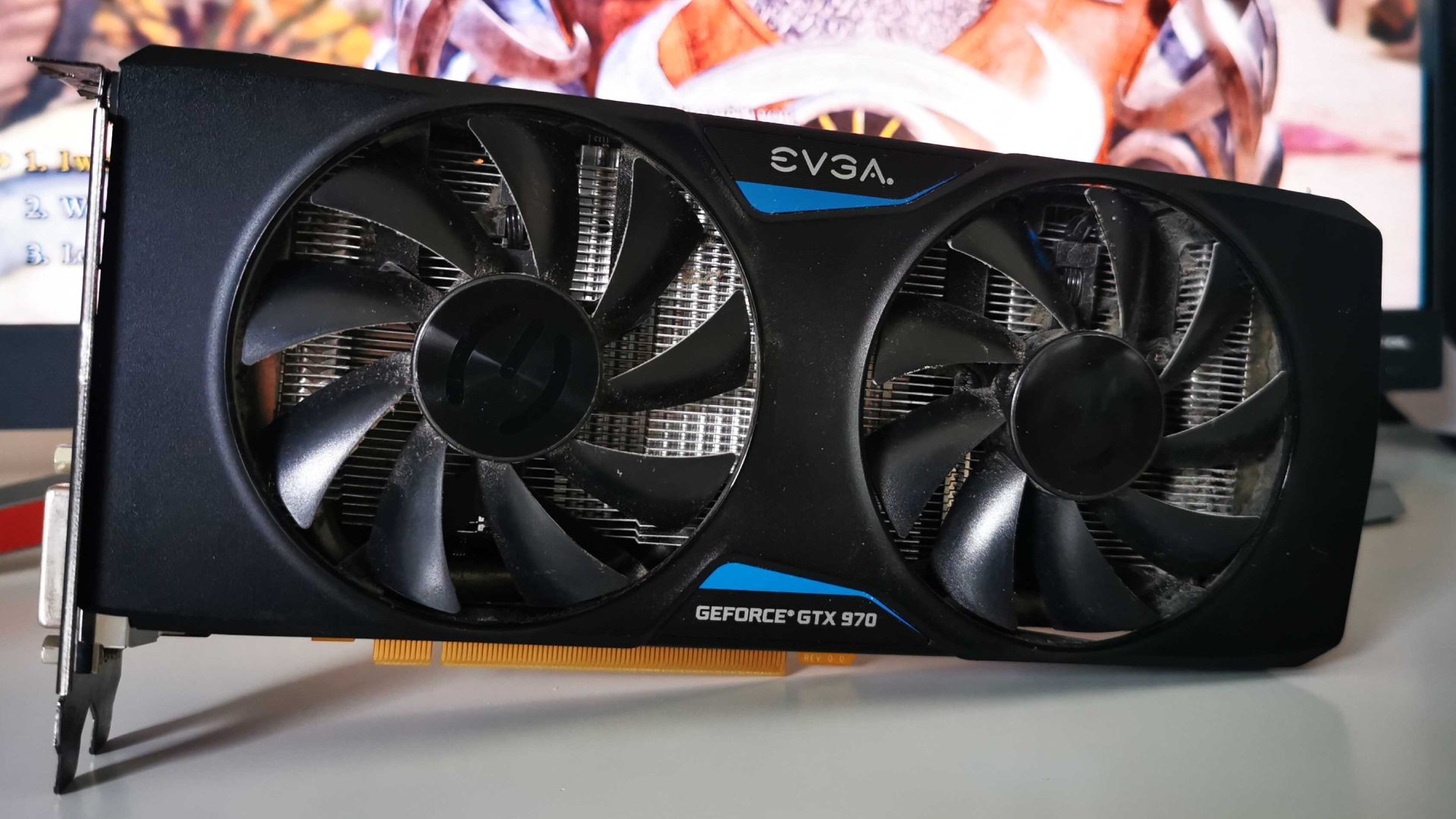I bought this Nvidia GTX 970 graphics card 10 years ago, here’s how it holds up in 2024
Still a GeForce to be reckoned with?

I’ll admit that having a favorite graphics card is probably weird, but the Nvidia GeForce GTX 970 holds a special place in my heart. It’s the first GPU I ever bought brand new, following years of buying preowned components to stuff inside my cobbled-together gaming PC. Ten years on, and unlike the green team, I haven’t forced my EVGA card into retirement yet, so I thought I’d run through how it holds up handling new releases in 2024.
Given the above, it’s perhaps not surprising to hear that I consider the GeForce GTX 970 to be the best graphics card out of the entire 900-series line-up. Yes, I know, the GTX 980 Ti was the flagship of the Maxell era, but honestly? Young Phil was more than happy to pay under $300 / £300 for a GPU that could still run Dark Souls 3 at 1080p without compromise two years after launch. In fact, I recall it blasting through most of my Steam library after picking one up from Scan UK back in 2014, putting my old toasty GTX 470 to shame with its efficiency and temperatures.
Now, I want to throw in a few disclaimers before diving into the whole GTX 970 2024 experience. First off, unless you’re going for a scrapheap challenge build, I wouldn’t recommend picking up the card to play new releases. That’s not to say the GPU doesn’t hold its own, and we’ll get onto why I think it still slaps, but you’ll ultimately end up with a rig that isn’t designed to handle today’s grueling graphics. Secondly, my benchmarks here are more for a bit of fun rather than anything scientific, and I’m sure that if I didn’t just chuck it into an Intel Core i9-13900K build, I’d have ended up with different results.

Rather than try and get the GTX 970 to pull off the same tricks as something like the Nvidia GeForce RTX 4070 Super, I decided to cut the aging graphics card some slack. By that, I mean I used the same approach as when testing the best gaming handhelds and set all game settings to low. Not doing so would more or less result in PowerPoint presentation levels of speed, and dialing things back means we’ll actually get meaningful figures.
What I have kept the same is my selection of test games, as that’ll help us compare the experience to modern-day alternatives. While the GTX 970 won’t be able to remotely keep up with anything from the past five years, I enjoy the idea of potentially getting it to provide the same fps by compromising settings. Anyway, here’s a bunch of figures to glance at before we dive into the qualitative side of things.
| Games tested | Average fps (1080p, low settings) |
|---|---|
| Cyberpunk 2077 | 40fps |
| Hitman 3 | 85fps |
| Total War: Warhammer 3 | 95fps |
| Halo Infinite | 72fps |
| Baldur's Gate 3 | 58fps |
Okay, let’s get the stinky Cyberpunk 2077 result out the way first, as I’m not even a little bit surprised that it’s low. I wouldn’t call 40fps unplayable, but for the amount of visual compromise involved, it’s not an ideal setup. I guess I’m still surprised that the game can handle Night City’s shenanigans, and I reckon it fares better than the PS4 when the RPG first launched. (I’m only half joking.)
Place the fact we’re talking about lowest settings aside, and I’m pretty gobsmacked by the rest of the benchmarks. I mean it when I say I could happily play Hitman 3 and Total War: Warhammer 3 on a GTX 970 today, especially if my eyes had never witnessed better textures and visuals. Don’t get me wrong, everything does end up looking a bit low res to achieve frame rates well over 60fps, but nothing looked overly egregious when it comes to these two games specifically.
Sign up to the GamesRadar+ Newsletter
Weekly digests, tales from the communities you love, and more
I had a bit of a funny run-in with Halo Infinite, as when I first booted it up using the GTX 970, I was presented with what could be OG Xbox graphics. Turns out that the weirdly charming lack of textures was a symptom of in-game scaling, as I’d accidentally set my desktop resolution to 4K. Sticking with native 1080p instantly remedied the issues, providing over 70fps in most multiplayer matches.


If there’s one certainty in my life these days, it’s that I’ll never escape the urge to dive into Baldur’s Game 3 at least once a month. So, it felt only right to include the massive D&D outing in my GTX 970 benchmarks, and this isn’t even the first time I’ve done so. Back when the game first launched, I fetched my trusty old GPU to check whether Larian's minimum requirements were sensible, as the developer included the card within its recommended specs.

In case you didn't read that previous Baldur’s Gate 3 specs run down, the GTX 970 can handle the RPG with settings cranked down low. You won’t quite reach that golden 60fps average during gameplay, and I did experience some stuttering during flashy battles. But hey, it works, and if you’re not too fussed about the detailing on that gnarly set of armor you’ve slapped on Karlach, you should be able to save Faerun without a hardware hitch. That said, the beaten path will also look like something from a PS2 outing, so perhaps curb your visual expectations.
One thing I’d like to commend this EVGA version of the GTX 970 is temps, as the card managed to stay at 70°C or below. Perhaps if I pushed the GPU a little, we’d end up with warmer results that’d spark concern, but the vendor’s dual fan cooling solution isn’t too different from what you’d find on modern models.
Should you buy a GTX 970 in 2024?

Before buying any graphics card, I’d strongly recommend considering both your budget and visual requirements. That way, you’ll be able to easily figure out whether you should get super thrifty and buy a GTX 970 in 2024, or opt for something brand new. Ultimately, there’s a huge gulf between these two choices specifically, as entry-level GPUs like the Nvidia GeForce RTX 4060 are an entirely different beast.
For starters, GTX graphics cards can’t use Nvidia’s AI-powered DLSS toolkit, which provides access to handy Super Resolution and Frame Generation abilities. New 70-series cards like the GeForce RTX 4070 Super can effectively boost fps with minimal caveats using clever upscaling tricks, enabling you to use higher resolutions than what should be possible natively. Not every game is compatible, but the feature is a budget PC godsend, and it should mean you’ll be able to hold onto the Lovelace card for longer. Put it this way, I’ll be disappointed if someone isn’t able to write an article just like this about the 4070 in 10 years, assuming that we aren’t just beaming 4K visuals into our brains by that point.
Despite all of that, I’d still say the GTX 970 is worth thinking about in 2024. Chances are that some of you are looking to get into PC gaming for as cheap as possible, and Nvidia’s 2014 GPU goes for under $50 on the likes of eBay. You might end up with a machine that isn’t designed to win against ferocious modern Steam libraries, but if you can thrift a build that’s suited, you’ll end up with a rig that’ll happily handle your backlog and some new release experimentation.
Anyway, here’s to another 10 years of the GTX 970 smugly sitting on my GPU shelf. If I’m sat here in a decade, I’ll let it finally die trying to run The Elder Scrolls 6.
Looking for a rig with the latest components? Check out the best gaming PC builds and best gaming laptops for a selection of high-spec rigs. Alternatively, take a peek at the best Steam Deck dock if you happen to own Valve's portable powerhouse.

I’ve been messing around with PCs, video game consoles, and tech since before I could speak. Don’t get me wrong, I kickstarted my relationship with technology by jamming a Hot Wheels double-decker bus into my parent’s VCR, but we all have to start somewhere. I even somehow managed to become a walking, talking buyer’s guide at my teenage supermarket job, which helped me accept my career fate. So, rather than try to realise my musician dreams, or see out my University degree, I started running my own retro pop culture site and writing about video games and tech for the likes of TechRadar, The Daily Star, and the BBC before eventually ending up with a job covering graphics card shenanigans at PCGamesN. Now, I’m your friendly neighbourhood Hardware Editor at GamesRadar, and it’s my job to make sure you can kick butt in all your favourite games using the best gaming hardware, whether you’re a sucker for handhelds like the Steam Deck and Nintendo Switch or a hardcore gaming PC enthusiast.


